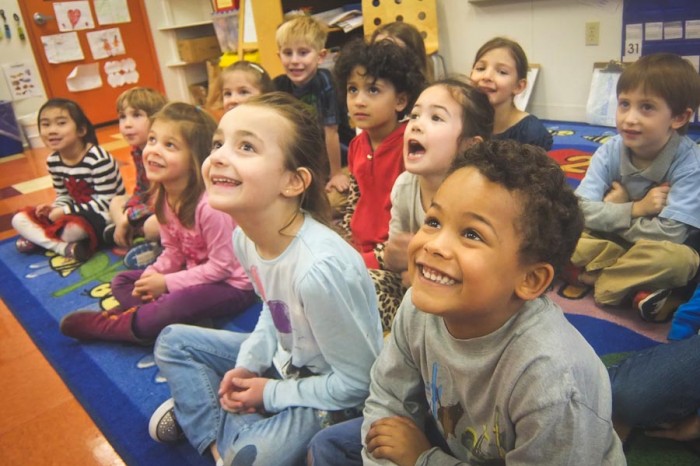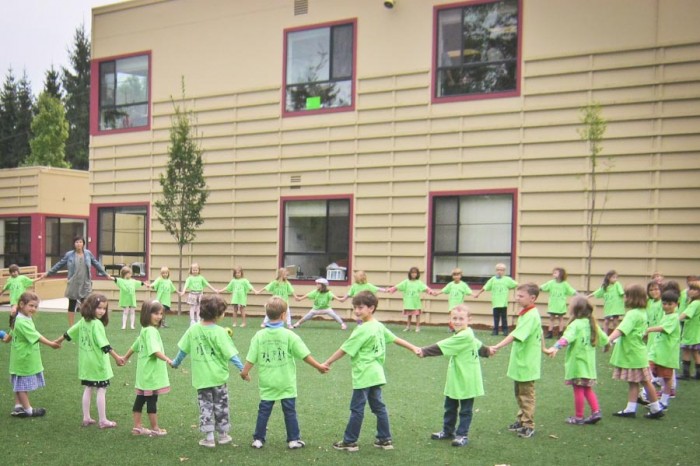
Braden Long, a 5-year old American from Seattle, WA, will start his first day of kindergarten today. He’ll spend his year learning how to write and read, figuring out math concepts, playing with friends at recess, and doing art projects. And he will be doing it primarily in French.
This is no big deal for Braden: it will be his third year at the French American School of Puget Sound (FASPS) and his dual-language skills are already better than that of his parents, who remember only a little bit of the second languages they learned in high school and college. Braden will join thousands of other students across the country in this type of education.
Braden’s mom, Harmony, says that it isn’t just the dual language component that has benefited her children (Braden’s sister, Eliana, is a 4th grader at FASPS this year).
“Even bigger than language is the global awareness that they receive at FASPS. The things that they talk about regarding China and the Great Wall, for example, I had no idea about those concepts as a kid,” Long says. “They are now sympathetic and empathetic to the world around them, and know that the world is small.”
While the French system of education in the U.S. has been around for many years and is well established, the broader trend towards bilingual education in any language got a later start. La Esquelita Spanish preschool in Seattle, one of the first dual language schools in this area, opened in in the late 1970s, followed by the Bellevue School District Spanish K-12 curriculum in 1986.
Altogether, there are now over 30 bilingual preschool options for three and four year olds in Seattle and Bellevue alone, many of which opened after 2000. They offer Spanish, French, Mandarin, German, Japanese, Persian, Hebrew, or Dutch. And a Vietnamese preschool, Hoa Mai, is scheduled to open this month.
Interestingly, it is not primarily foreign families who take advantage of these programs. Along with Braden’s family, almost 70% of FASPS students do not have French parents. At the Seattle preschool Les Enfants and Los Ninos de Seattle, 85% of the families do not speak French or Spanish. And at Puesta del Sol in Bellevue, a Spanish preschool that is part of the Bellevue public school system, 96% of their students come from English-only families.
How did this new family dynamic come about? Why do Braden’s parents send their child to a school unlike those they attended and encourage (and pay for) him to learn a language they don’t speak?

Harmony said that she first had to get over the hurdle of thinking that only French people could go to a French school.
“A French friend of mine enrolled her child in French preschool and asked me if I was going to do the same, since she knew I was interested in bilingual education. I said ‘but I don’t speak French’. She replied, ‘you don’t have to speak French for your children to benefit from this!’” Long recalls. “A light bulb went off in my head at that moment and I started looking into it more seriously.”
Professor Fred Genesee, a leading researcher on early dual language learning at McGill University in Montreal, says that demand has risen for dual language education over the past few decades.
“When I started doing research on this [30 years ago], the issue was very marginal in the U.S. and Canada. Now it is a hot topic,” he said in an interview earlier this year.
In April 2014, FASPS hosted Professor Genesee for a lecture event at the Stroum Jewish Community Center (SJCC). Seventy people, most of them outside of the FASPS community, turned out to learn how early dual language education would benefit their children. A similar event in Bellevue a month before drew 90 attendees. Genesee has seen this demand for information on and opportunities in bilingual education grow nationwide.
“Bilingualism used to be about equalization in the U.S.; now it is about globalization,” Genesee says.
He believes that bilingualism used to be a necessity primarily for immigrants coming to the U.S. in order for them to integrate in an English-speaking society. More recently, he believes, individuals and families are focused on becoming bilingual because of the explosion of globalization in business, travel, and media.
Kristen Glant, English-only speaker and mother of two grade eight students who just graduated from FASPS after 11 years at the school, said in a May interview that dual language education has been great for her kids.
“My kids are coming out of the school with an extraordinary experience and advantage: the ability to speak, to be virtually tri-lingual [FASPS students start a third language in grade 6], makes them much more competitive in the global job market,” Glant says. “I don’t know if they will use it in their careers or not, but even if they don’t, they still had a wider exposure to the world through this educational system, through some of the travel they have done, and through the kids they have met that have brought different experiences with them to the school.”
For a list of bilingual preschools in the Seattle area, check out this article from Parentmap.

